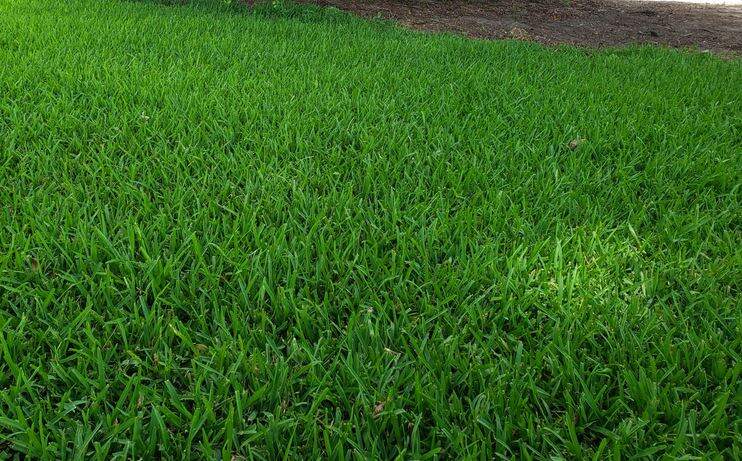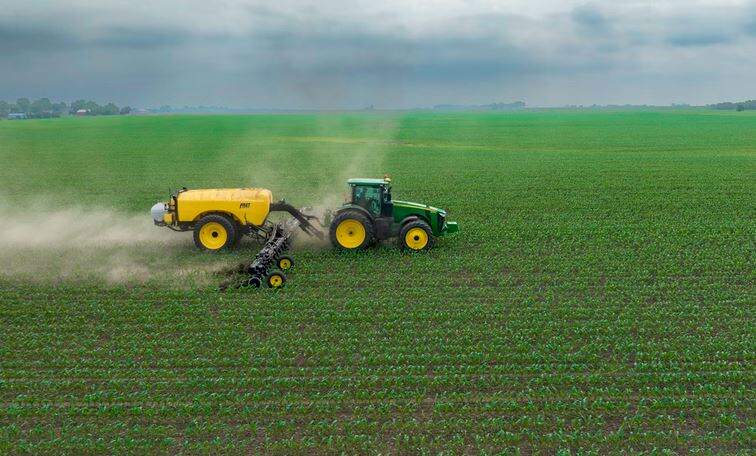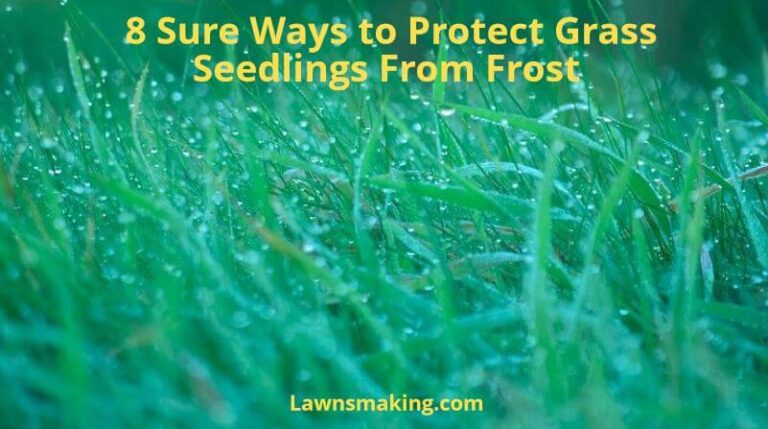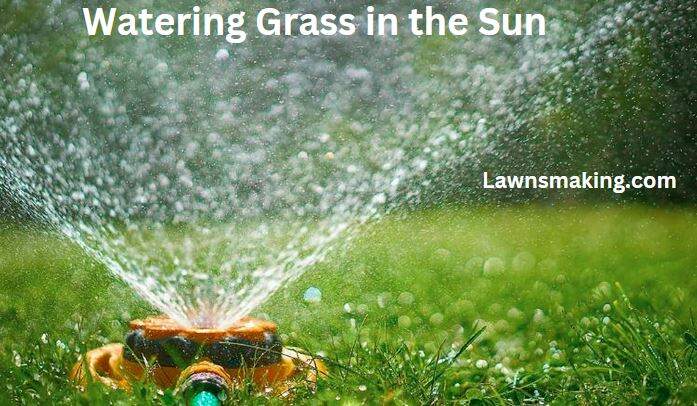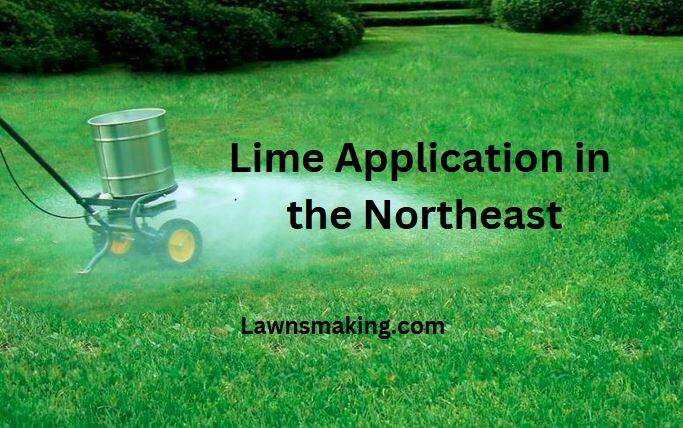
One of lawn care’s most crucial yet neglected aspects is maintaining the ideal soil pH. Most soils in the northeast US region are naturally acidic and need liming occasionally to keep the pH in check. Therefore, knowing when to apply lime to lawns in the northeast is crucial.
The best time to apply lime to lawns in the northeast is spring or fall seasons. Fall has an extra advantage since it provides the longest time for lime to show effect in the soil, allowing optimal soil conditions when the growing season begins.
Keep reading this article to uncover essential details regarding lime application to lawns in the humid northeast region of the U.S. We’ll also answer some of the most frequently asked questions regarding the same.
The Best Time to Apply Lime to a Lawn in the Northeast: 8 Key Considerations
If you reside in the northeastern part of the US, you probably understand how acidic soils can be challenging in cultivating healthy green lawns.
The soils in this region are naturally acidic, with a pH value as low as 3.5.
Most lawn grass species require soils with pH values between 6.0 and 7.0 (slightly acidic) to thrive.
A soil pH below 6.0 is dangerous to grass in the following ways.
- It causes aluminum toxicity, which inhibits proper root growth
- It restricts the uptake of essential nutrients by plants
- It inhibits microbial activity in the soil
- It reduces the effectiveness of fertilizers, pesticides, and herbicides
This usually results in reduced lawn vigor, color, and ability to withstand and recover from stress.
As such, liming your lawn periodically is crucial.
Liming restores and maintains proper soil pH and reverses the damaging effects of some elements in the soil, including aluminum, manganese, and iron.
It also increases the availability and absorption of vital nutrients, contributes to the supply of calcium and magnesium in the soil, and improves soil texture and conditions for microbial activity.
The result is optimal grass growth.
However, the effect of lime on soil pH is less immediate and dramatic than you’d think. The lime will take several months to change your lawn’s pH and create a beneficial nutrient balance.
Find Out: Can You Apply Lime and Fertilizer to Your Lawn at the Same Time?
Experts recommend applying lime to your lawn six months to one year before seeding.
This way, the lime will have enough time to deacidify the soil, providing optimal conditions during the growing season.
Liming just before seeding is also okay. What’s not okay is not treating your lawn with lime when necessary.
Consider spreading lime on a lawn in the northeast during the spring or fall seasons.
The warm grounds in springtime will better absorb and distribute lime evenly. Furthermore, the effects of lime on the soil will be apparent in a few months while the grass is still growing.
On the other hand, the precipitation typical in the fall and winter seasons will allow easy breakdown and absorption of lime into the soil. It will also prevent any potential foliar burn or damage after application.
Also Read: Should You Fertilize Before or After Mowing?
8 Considerations When Applying Lime to a Lawn in the Northeast

When applying lime to a lawn in the northeast, there are considerations to have in mind. Here are a few.
- Perform a soil test before spreading lime on your lawn. The test results will serve as an excellent guide in determining whether your lawn requires lime and the amount to apply.
- Avoid excessive lime application, as it can raise your soil’s pH to dangerous levels. You should note that a soil pH value above 8.0 (alkaline) is just as harmful as a lower (acidic) pH.
- Consider delaying lime treatment if rain is in the forecast. Wait until the showers are over and the lawn has adequately drained. Liming is most effective in relatively dry soils since it cakes up in soggy soils and doesn’t mix well.
- On the contrary, avoid applying lime in extreme heat or on drought-stressed grass. If necessary, moisten the ground thoroughly before and after lime application. This will help the soil to absorb the lime sufficiently.
- If you have clay or sandy soil, consider improving the texture by adding organic matter to increase the efficiency of the lime treatment. Lime seeps through sandy soil too rapidly and doesn’t mix fast enough in clay soil.
- Avoid liming the areas within your landscape with plants that thrive in acidic soil. The lime will damage the growth of these acid-loving plants.
- While you can seed, fertilize, and lime your lawn simultaneously, it’s always best to put lime first and give it enough time to act on the soil before planting and fertilizing.
- Use lime with calcium carbonate equivalence of (CCE) 80% and above. The lower the CCE, the more lime you’ll use. You’ll find the product’s CCE information on the package.
Why Are Soils in the Northeast Acidic?
Most northeast soils are acidic mainly because of the heavy rainfall. The rain washes away the alkaline nutrients, leaving a more acidic soil.
These areas have more tree cover as well. The decomposition of plant materials contributes to the lower pH.
Regarding the geological formations in the northeast region, the underlying acidic granite rocks where the soils originate significantly impact their acidic character.
Lastly, crop harvesting, the reaction of ammonium, nitrogen, or urea-based fertilizers in the soil, and irrigation using acid water increase the northeast soil’s acidity.
How Should I Apply Lime to My Lawn?
Liming your lawn is very easy and similar to fertilizer application.
Once you’ve determined the amount of lime to use via a soil test, apply it using a drop or broadcast spreader to your lawn. Spread the lime in a criss-cross pattern to ensure even coverage.
Ensure the lime is thoroughly mixed with the soil since it’s only effective where it’s applied. Also, water your lawn after treatment to aid the absorption of lime in the soil.
The application frequency will vary significantly depending on the soil type and drainage. For instance, sandy soil will require liming more frequently than clay-based soil due to its lower buffering capacity.
Also, well-drained soil will require more frequent lime applications due to increased leaching.
Generally, apply lime to your lawn only when it’s necessary.
Conclusion
Controlling your lawn’s soil pH is integral to lawn care best practices.
Knowing how soils in the northeast region acidify and pH’s critical role in grass growth is vital to managing your lawn.
Adding lime to your lawn when necessary will ensure your turf receives the nutritional benefits it requires for healthy and lush growth.
